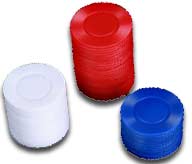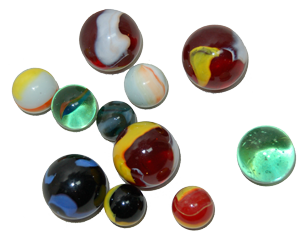When I was 18 I sat in a mandatory economics class and listened to my sweet elderly teacher say that “when making a decision, you must consider two things—‘how much does it cost’, and ‘what’s in it for me?’” It was at this moment, essentially, that I decided to become an environmental educator.
 I was appalled that people were being taught not to think of the ramifications for their decisions, and I have spent the 6 years since then working to teach our future generations that there are consequences for every action you take.
I was appalled that people were being taught not to think of the ramifications for their decisions, and I have spent the 6 years since then working to teach our future generations that there are consequences for every action you take.
During staff training at High Trails, I was faced with some decisions about my class materials that drove me to ponder the most sustainable route. Although I have a strong environmental bias, I understand the importance of taking all realities into consideration when making a decision. How much something costs; how morally sound it is; how it affects other people, animals, and the atmosphere; where it comes from; who benefits from my choosing to use it, etc.
As I considered what materials to use for my classes, all of these thoughts buzzed through my head. As outdoor educators, our primary prop is the nature around us, but to really engage children through experiential learning, which is what urges them to drive all the way up the mountain in the first place, is to find a balance between something bright, flashy, appealing to multiple senses and effective at communicating a message, and something free, using minimal resources, in line with the message we teach.
A lot of instructors use dry erase boards and dry erase markers. While this has the benefit of being easily erasable and potentially colorful, one instructor confessed the irony of having to throw away a dead marker in the middle of our Environmental Awareness class. Because of this, I decided to try out chalk.
The obvious drawbacks of chalk are that it’s not weather proof (and as winter rounds the corner, I’m reminded of how much weather we receive) and using it requires a courage against chalky hands and clothes. Is it more important for students to get a good, colorful visual that they can remember when they’re back at school, or does a mere black and white image do the trick? Is it helpful for students to see us modeling more sustainable behavior, like using chalk—a non-renewable resource extracted from deep mines but is non-toxic and produces zero waste— over dry erase markers housed in a plastic case that comes from petroleum? And in that case, which one is truly more sustainable?
 I faced the same questions regarding other props we use. Using small sticks, cut or carved at different lengths instead of poker chips (used for different classes as “game” pieces), which are easy to identify on the forest floor, may seem more sustainable, but when those poker chips are obtained from a thrift store, are you saving a resource, or causing someone at the thrift store after you to buy new poker chips because there aren’t any? Is there a measurable difference for the students? Is it helpful to have large colorful object like a poker chips over smaller chips?
I faced the same questions regarding other props we use. Using small sticks, cut or carved at different lengths instead of poker chips (used for different classes as “game” pieces), which are easy to identify on the forest floor, may seem more sustainable, but when those poker chips are obtained from a thrift store, are you saving a resource, or causing someone at the thrift store after you to buy new poker chips because there aren’t any? Is there a measurable difference for the students? Is it helpful to have large colorful object like a poker chips over smaller chips?
 I chose to use colored glass marbles that have been handed down from previous instructors, thereby avoiding petroleum-based plastics. Rather than buy new colored craft sticks, I found some bamboo shish kabob sticks destined for the landfill that I cut into different sizes. Visual learners still get a visual aide, albeit not a bright one, and I get to uphold my preaching of the value of reduce and reuse.
I chose to use colored glass marbles that have been handed down from previous instructors, thereby avoiding petroleum-based plastics. Rather than buy new colored craft sticks, I found some bamboo shish kabob sticks destined for the landfill that I cut into different sizes. Visual learners still get a visual aide, albeit not a bright one, and I get to uphold my preaching of the value of reduce and reuse.
One thing I’m sure about is that we create a lot of trash. Although we recycle just about anything we can, I find myself with a lot of plastic bottle caps, straws and miscellaneous packaging wrappers that I don’t want to throw them away. Often I put them in my bag of props for our trash activity or the bird beak relay. These props then double as a visual when I’m talking about the 4 or 5 R’s.
 It is difficult to be thrifty and resourceful without coming off as cheap, but I feel that as long as you put thought into your materials and keep them in line with the message of High Trails, they become just as effective, if not more so, than something you could pick up at a store. And you save some green.
It is difficult to be thrifty and resourceful without coming off as cheap, but I feel that as long as you put thought into your materials and keep them in line with the message of High Trails, they become just as effective, if not more so, than something you could pick up at a store. And you save some green.
At High Trails Outdoor Science School, we literally force our instructors to write about elementary outdoor education, teaching outside, learning outside, our dirty classroom (the forest…gosh), environmental science, outdoor science, and all other tree hugging student and kid loving things that keep us engaged, passionate, driven, loving our job, digging our life, and spreading the word to anyone whose attention we can hold for long enough to actually make it through reading this entire sentence. Whew…. www.dirtyclassroom.com

Comments are closed.